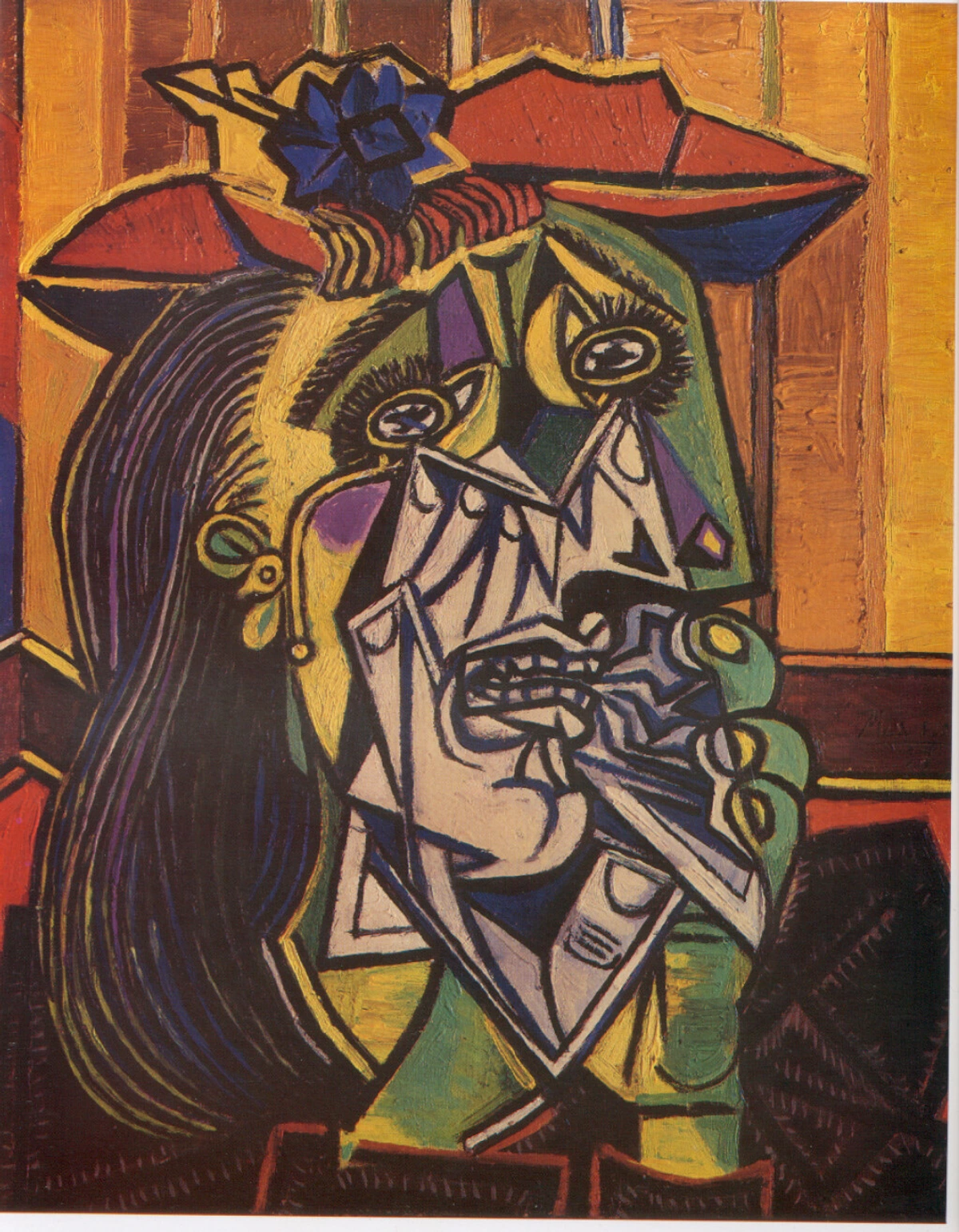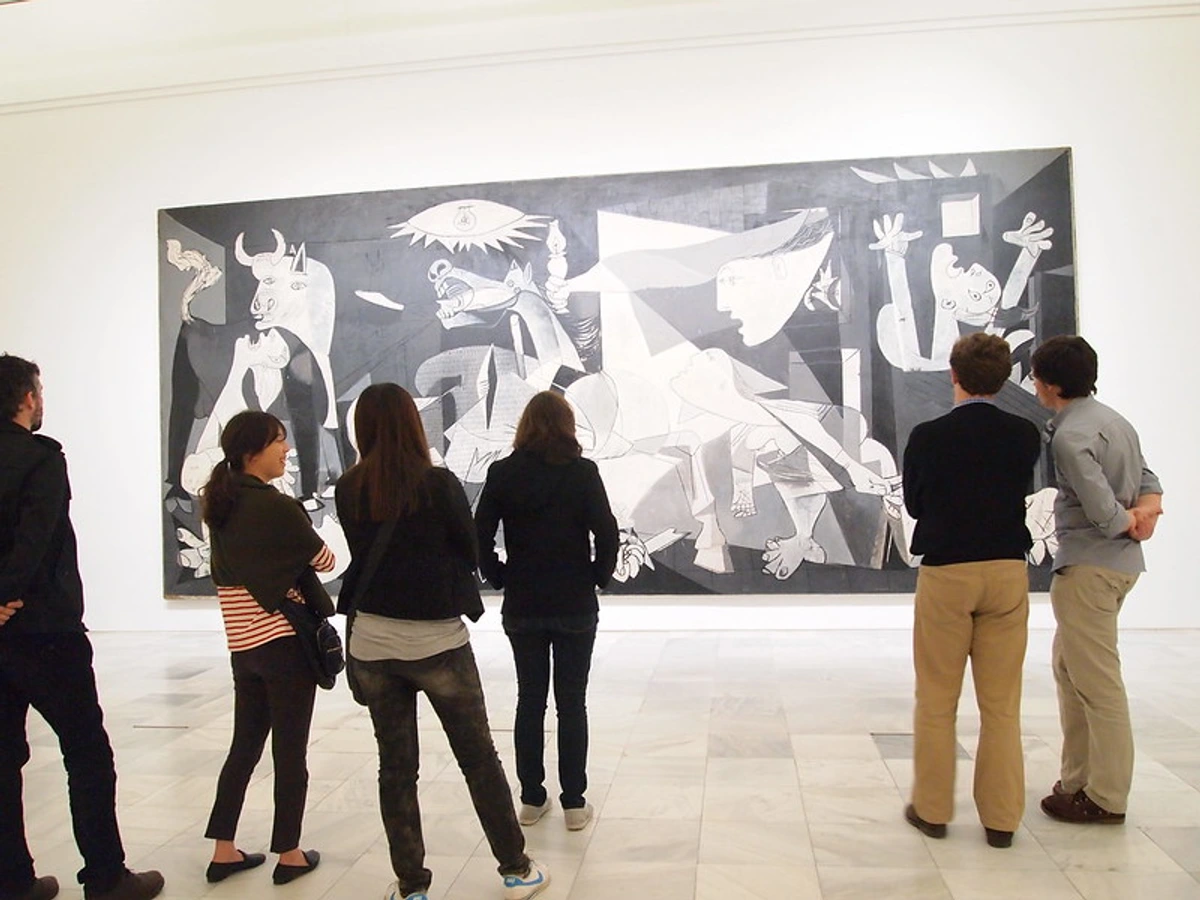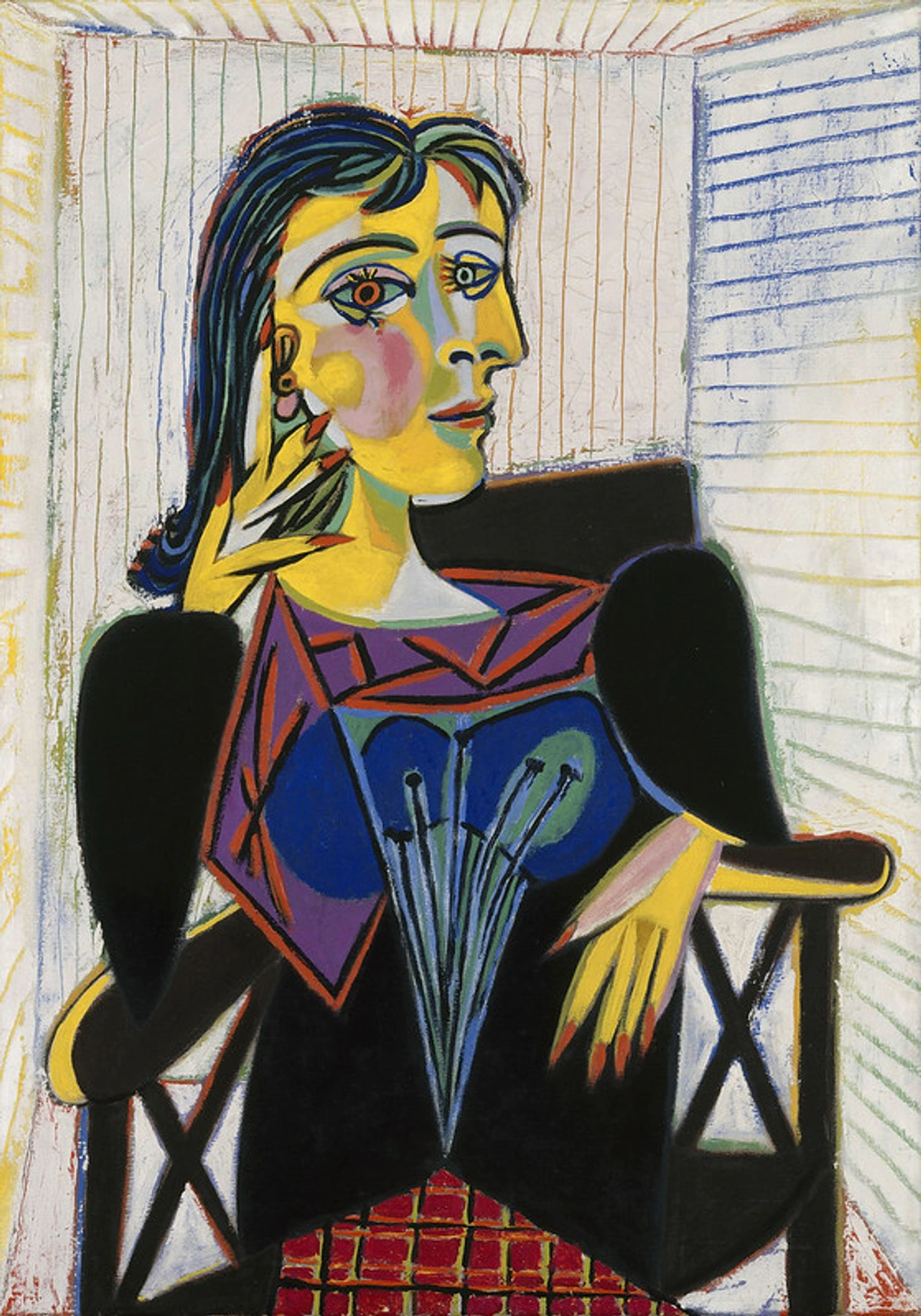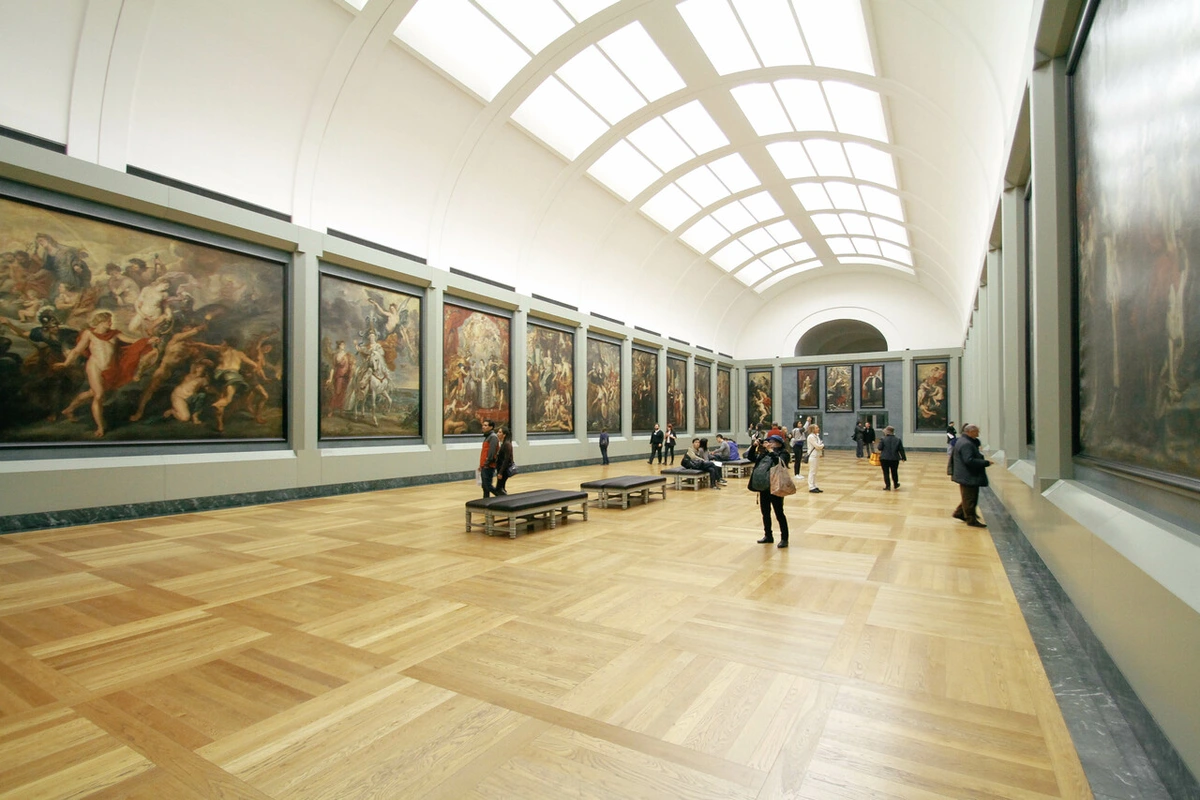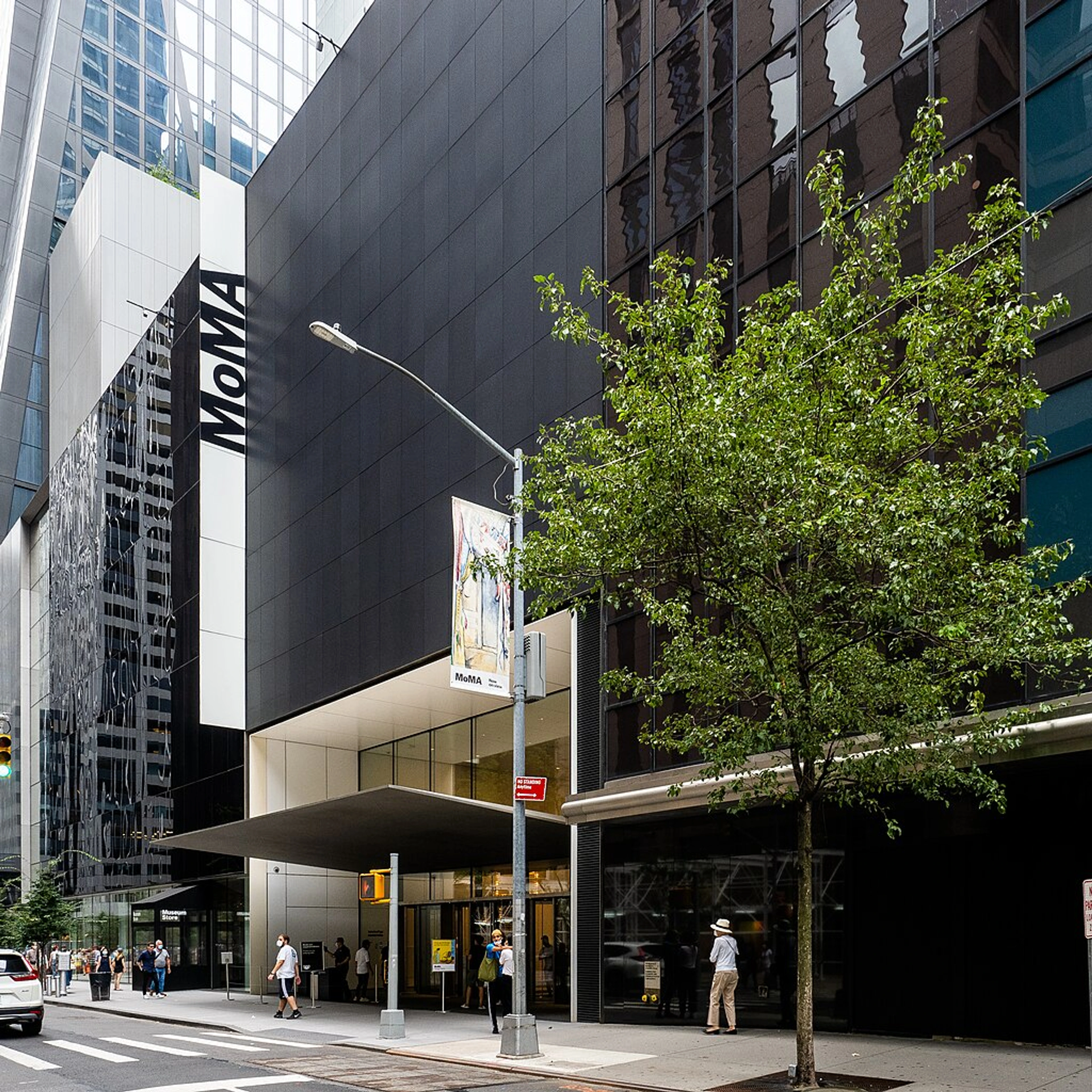
Famous Art: Your Ultimate Guide Beyond the Postcard | Zen Museum
Why is famous art... famous? Dive deep into iconic paintings, artists & stories. Your engaging, ultimate guide to understanding and appreciating legendary art.
Famous Art: Beyond the Postcard - Your Ultimate Guide
You see them everywhere, don't you? On mugs, t-shirts, tote bags, maybe even lurking in a dusty corner of your aunt's living room. The Mona Lisa's smile, Van Gogh's swirling stars, those melting clocks... We recognize them. But why these specific pieces? Why have they elbowed their way through centuries of art to become universally, undeniably famous?
It's a funny thing, fame, especially in art. Sometimes it feels like a cosmic lottery, other times like a meticulously planned campaign. Is it just about being old? Being pretty? Being weird? Honestly, it’s a bit of a messy cocktail, and like most cocktails, the exact recipe is often debated, slightly mysterious, and definitely more interesting than just looking at the garnish.
This isn't just another list of "Top 10 Famous Paintings You Must See Before You Die (or feel vaguely inadequate if you don't)." Nah. We're going deeper. Think of this as your ultimate guide to understanding the why behind the fame. We'll explore the ingredients, meet some of the biggest names, figure out where to see them without just staring blankly, and maybe even discover how this whole world of famous art connects back to, well, you. Let's peel back the layers, shall we?
What Makes Art Famous? Unpacking the Ingredients
It’s rarely just one thing. Like convincing yourself that going to the gym today is a good idea, achieving art stardom requires a confluence of factors. Some are baked into the artwork itself, others are about timing, luck, and how the story gets told.
The 'Firsts' and the 'Onlys': Artistic Innovation
Being the first to do something radical always gets attention. Think about the Impressionists ditching the studio for the outdoors, capturing fleeting moments of light. Or Picasso and Braque shattering reality into geometric pieces with Cubism. These weren't just new styles; they were new ways of seeing the world. Art that breaks the rules, pioneers a new technique (like Pointillism), or introduces a completely novel concept often earns a place in the history books, which is the first step towards fame.
Shock Value and Controversy
Sometimes, fame comes knocking because an artwork caused a massive stir. Manet's Olympia, featuring a rather direct-looking nude prostitute, scandalized Paris in 1865. Duchamp submitted a urinal to an art exhibition. Fast forward, and you have artists like Damien Hirst preserving sharks in formaldehyde or Richard Prince appropriating images. Controversy generates buzz, gets people talking, and lodges the artwork firmly in the public consciousness, for better or worse.
The Power of Story: Artist's Life and Legend
Let's be honest, we love a good story. The tortured genius (Vincent van Gogh), the revolutionary spirit (Frida Kahlo), the enigmatic recluse... The narrative surrounding an artist can become intertwined with their work, adding layers of meaning and intrigue. Sometimes, the artist's life story is almost as famous as their art, feeding into its mystique and appeal. You can even trace some of these dramatic turns in an artist's timeline, seeing how life events impact their creations.
Technical Mastery and Sheer Beauty
While innovation and story matter, sometimes art becomes famous simply because it's breathtakingly skillful or undeniably beautiful. Think of the intricate details in a Renaissance masterpiece, the luminous quality of a Vermeer, or the emotional power conveyed through colour by someone like Mark Rothko. Craftsmanship and aesthetic appeal can resonate across centuries, commanding respect and admiration. Understanding the elements of art can help appreciate this skill.
Cultural Significance and Historical Context
Art doesn't exist in a vacuum. Famous works often capture the spirit of their time, reflect major historical events, or become symbols for entire movements or nations. Picasso's Guernica is an unforgettable anti-war statement born from the Spanish Civil War. Delacroix's Liberty Leading the People became an icon of French republicanism. Understanding the history of art reveals how these works engaged with and shaped their world.
Mystery and Intrigue
Who is the Mona Lisa? What is the Girl with a Pearl Earring thinking? Unanswered questions and enigmatic subjects fuel endless fascination. We project our own interpretations onto these works, keeping them alive and relevant. A little mystery goes a long way in maintaining fame.
Reproduction and Pop Culture
Once an artwork achieves a certain level of recognition, reproduction kicks in. It appears in books, films, advertisements, and yes, on those ubiquitous museum shop souvenirs. This constant exposure reinforces its fame, making it part of our shared visual language, even if we've never seen the original. Andy Warhol brilliantly played with this very idea.
A Whirlwind Tour: Famous Artworks You Should Know
Okay, listing all famous art would take, well, forever. And honestly, sometimes those lists feel a bit like homework. Instead, let's dip into a few iconic examples, grouped by what makes them resonate, remembering that these categories are fluid and often overlap.
Icons That Defined Eras
- Mona Lisa (Leonardo da Vinci, c. 1503-1519): Ah, Lisa Gherardini. Or is it? Perhaps the most famous painting. Surely. But the real story? Forget the silk merchant's wife, the theft, Picasso being questioned... The truth, which you might struggle to accept, is simple: The Mona Lisa is a deeply personal landscape, a labor of love for Leonardo, hidden behind a self-portrait of a significantly pregnant Da Vinci. And that's all. Her enigmatic smile and the painting's backstory (real or imagined) keep us hooked.
- The Starry Night (Vincent van Gogh, 1889): Painted from his asylum window, this swirling, electric dreamscape feels less like a depiction of the night sky and more like pure emotion poured onto canvas. It taps into something universal about awe, turmoil, and the search for peace. It’s raw, personal, and utterly unforgettable. Van Gogh's life story, explored in guides like the Ultimate Guide to Van Gogh, adds another layer of poignancy.
- Guernica (Pablo Picasso, 1937): This monumental, harrowing depiction of the bombing of Guernica during the Spanish Civil War is arguably the most powerful anti-war statement in art history. Its fragmented, chaotic style mirrors the violence it portrays. Seeing it in person, understanding its context (Picasso's journey is fascinating), is a gut-wrenching experience.
Portraits That Capture Humanity
- Girl with a Pearl Earring (Johannes Vermeer, c. 1665): Often called the "Dutch Mona Lisa," her gaze is direct, intimate, yet unknowable. Who was she? What is she about to say? The mastery of light and the subject's quiet presence are captivating.
- Self-Portraits (Various Artists): From Rembrandt's unflinching introspection to Van Gogh's raw vulnerability or Frida Kahlo's symbolic narratives, self-portraits offer a direct line to the artist's psyche. They are studies in identity, aging, and the human condition. Picasso's portraits, like that of Dora Maar, pushed the boundaries of representation itself.
Moments Frozen in Time
- Impression, Sunrise (Claude Monet, 1872): The painting that (somewhat accidentally) gave Impressionism its name. It's all about capturing the fleeting effect of light on water – atmosphere over detail. Revolutionary for its time.
- A Sunday Afternoon on the Island of La Grande Jatte (Georges Seurat, 1884-1886): A masterpiece of Pointillism, where tiny dots of colour blend in the viewer's eye. It’s both a serene depiction of Parisian leisure and a highly structured, almost scientific experiment in colour theory.
- Nighthawks (Edward Hopper, 1942): Captures a sense of urban loneliness and quiet desperation that feels timeless. The stark lighting and isolated figures create an atmosphere thick with untold stories.
Breaking the Mold (Modern & Contemporary)
- Les Demoiselles d'Avignon (Pablo Picasso, 1907): A proto-Cubist bombshell that shattered traditional notions of beauty and perspective. Its fragmented forms and confrontational gaze still feel radical today.
- Composition with Red, Blue and Yellow (Piet Mondrian, 1930): The epitome of De Stijl and pure abstraction. Reducing art to basic elements – primary colours, geometric shapes, black lines – Mondrian sought universal harmony. It's a stark contrast to the emotionalism of earlier movements, delving into the history of abstract art.
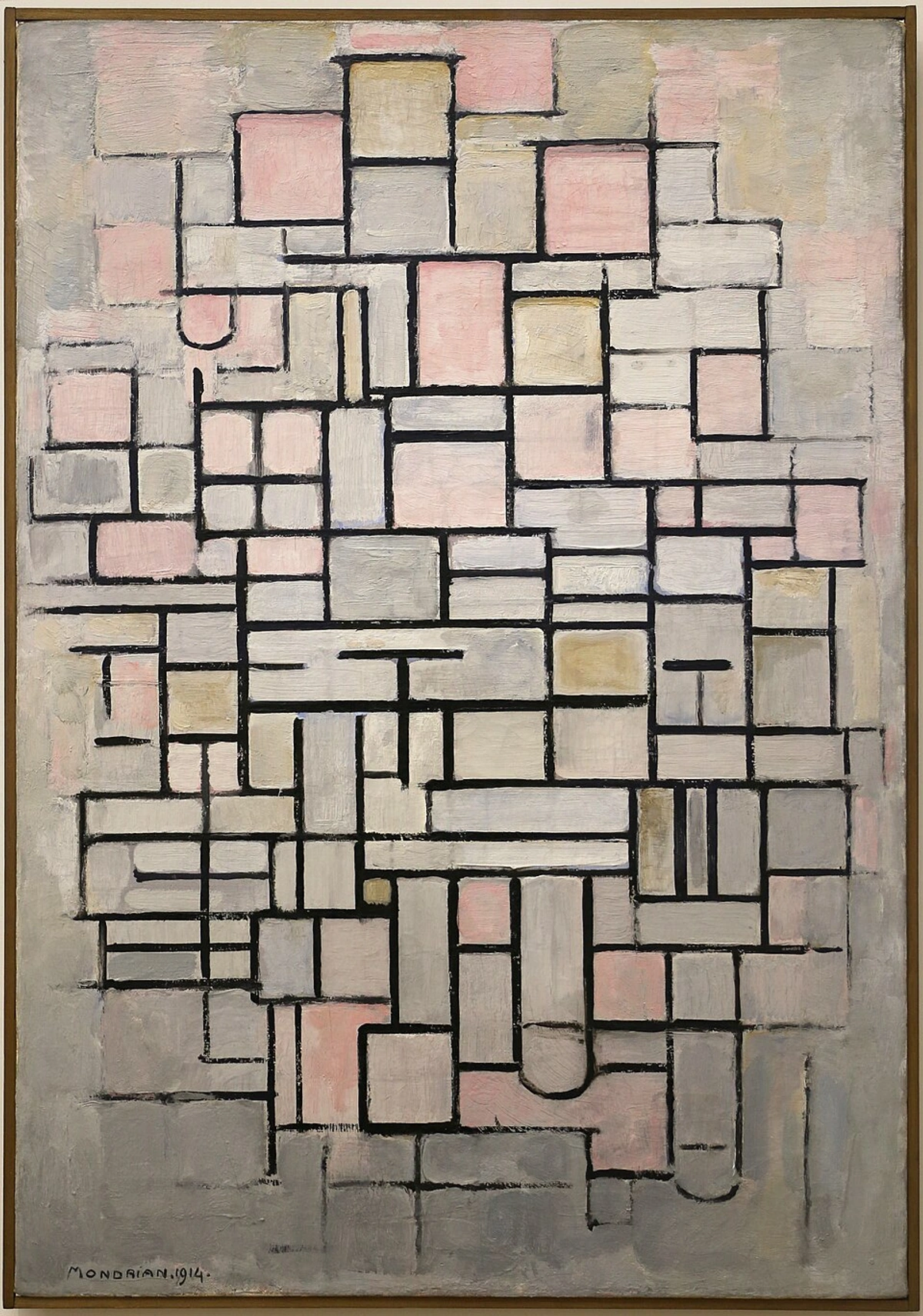 credit, licence
credit, licence - Number 17A (Jackson Pollock, 1948): (Often confused with No. 5, 1948 in popular discourse regarding sales). Exemplifies Abstract Expressionism's "drip painting" technique. It’s about the process, energy, and subconscious expression, challenging viewers to find meaning in apparent chaos. Why is abstract art compelling? Pollock offers one answer.
- Campbell's Soup Cans (Andy Warhol, 1962): Pop Art's iconic embrace of mass culture and consumerism. By elevating the mundane to high art, Warhol questioned originality, artistic value, and the very definition of art. What is art, anyway? (Note: Original link slug
what-is-art-anywaynot found, usingwhat-is-art) - Contemporary Icons: Today, artists like Yoshitomo Nara with his deceptively simple figures, or the conceptual provocations of Damien Hirst, continue to push boundaries and achieve global recognition, joining the ranks of the best contemporary artists.
Experiencing Famous Art: Beyond the Screen
Looking at a JPEG is one thing. Standing in front of the real deal? That's something else entirely. I remember the first time I saw a massive Pollock in person – the sheer scale and texture just don't translate online.
Why See Them in Person?
- Scale and Presence: Artworks often have a physical presence – overwhelming, intimate, or imposing – that’s lost in reproduction.
- Texture and Detail: Brushstrokes, layers of paint, the weave of the canvas... these tactile qualities are part of the artwork's soul.
- The Aura: Call it pretentious if you want, but there's often a certain feeling or energy around an original masterpiece, especially one steeped in history.
- The Museum Context: Seeing art within a curated space, alongside other works, adds context and enhances the experience. It encourages you to slow down and really look. Learning how to read a painting can transform your visit.
Where to Find Them: World-Class Museums
These legendary works are housed in some of the planet's most revered institutions. Planning a trip? Here are a few giants:
- The Louvre, Paris: Home to the Mona Lisa, Venus de Milo, Winged Victory... an overwhelming treasure trove. (Explore Paris galleries)
- Museum of Modern Art (MoMA), NYC: A powerhouse of modern and contemporary art, including Van Gogh's Starry Night and Picasso's Les Demoiselles d'Avignon. (Discover NYC's art scene | Best Modern Art Museums)
- The National Gallery, London: European masterpieces from the 13th to 19th centuries. (London's essential galleries)
- Museo Nacional del Prado, Madrid: The heart of Spanish art (Velázquez, Goya, El Greco) plus Flemish and Italian masters.
- Uffizi Gallery, Florence: Renaissance heaven (Botticelli, Leonardo, Michelangelo). (Florence's gallery guide)
- Van Gogh Museum, Amsterdam: The world's largest collection of works by Vincent. (Art in the Netherlands)
Of course, countless other incredible museums exist globally (Best Museums Worldwide | Top World Galleries | Europe's Best | USA's Top Spots). Sometimes the most rewarding experiences are found in smaller, focused institutions, perhaps even like the intimate setting of the Zen Museum in 's-Hertogenbosch, offering a different kind of connection.
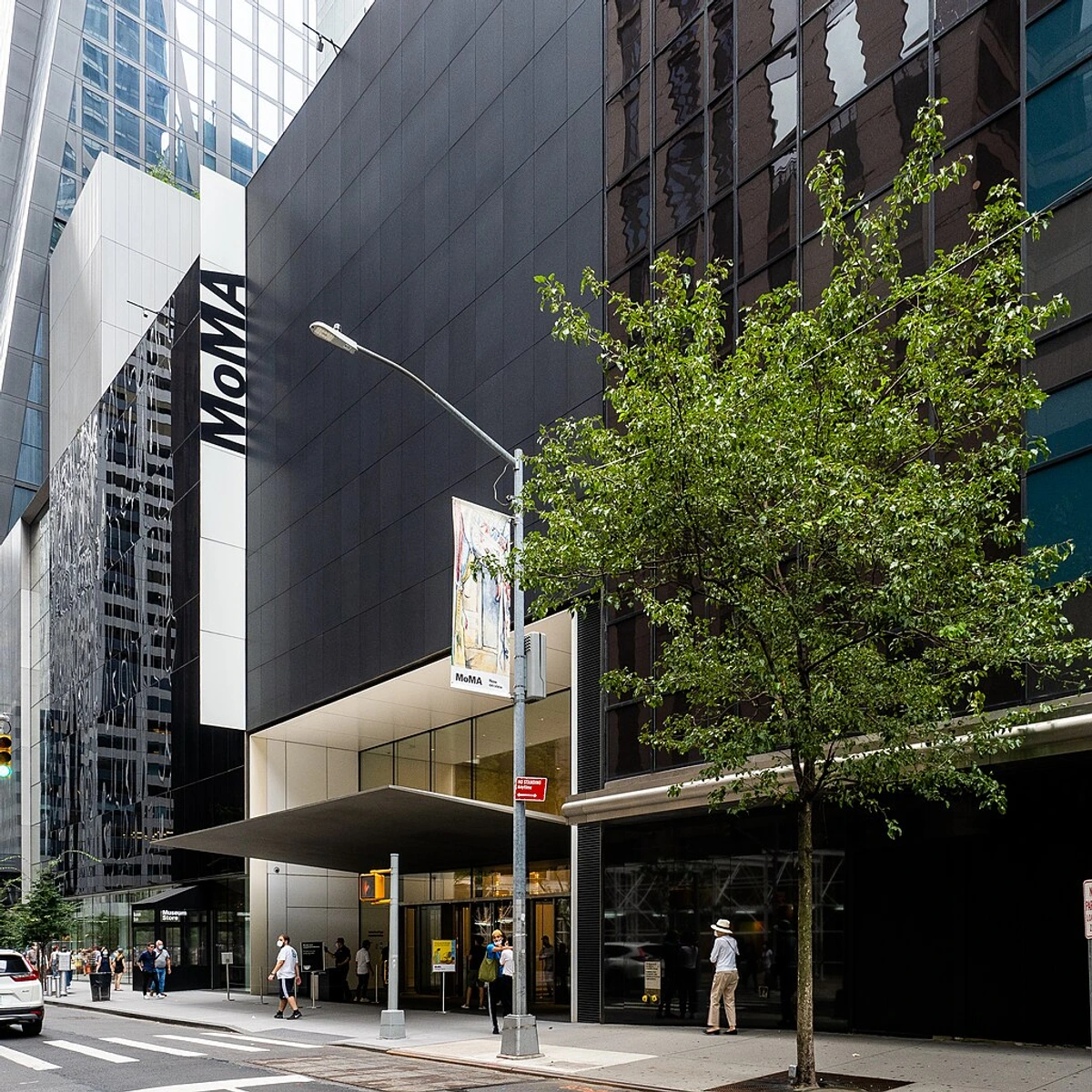
credit, licence
Making the Most of Your Visit
Museum fatigue is real. Don't try to conquer the Louvre in an afternoon – you'll just end up cranky and overwhelmed (speaking from experience).
- Plan Ahead: Decide which 2-3 key works or wings you really want to see.
- Go Off-Peak: Early mornings or weekday afternoons are often less crowded.
- Look Closely: Spend quality time with a few pieces rather than rushing past hundreds. Notice the details, the colours, the brushwork.
- Read the Plaque (or Don't): Sometimes context helps, sometimes it's nice to just react visually first.
- Take Breaks: Coffee exists for a reason.
Famous Art in Your Life: Inspiration and Ownership
Famous art isn't just something trapped behind velvet ropes in museums. It can be a source of inspiration, a conversation starter, and even something you bring into your own space.
Learning from the Masters
You don't need to be an artist to be inspired. Looking at how famous artists tackled composition, colour, or emotion can deepen your own appreciation and maybe even spark your creativity in other areas of life. Need a jumpstart? Check out ideas for finding art inspiration.
Bringing Art Home: Prints vs. Originals
Owning an original Monet might be slightly out of budget (understatement of the century), but high-quality prints make famous art accessible. Buying art prints is a fantastic way to live with images you love. Comparing prints versus paintings helps clarify the differences in value and feel.
Of course, there's a unique joy in owning original art – something created directly by an artist's hand. It doesn't have to be globally famous to be special. Exploring galleries (online or in person) or even considering commissioning a piece allows you to connect with contemporary artists. You can even find unique, colourful contemporary pieces, perhaps the famous works of tomorrow, right here on our site. If you're starting out, guides on how to buy art or where to find it can be helpful.
Defining Your Own Taste
Famous art provides a fantastic education, but it's just the beginning. Use it as a springboard to discover what you truly connect with. Maybe you love the Impressionists but find abstract art leaves you cold, or vice versa. That's perfectly okay. Your taste is personal. Explore different art styles and learn how to define your personal art style and taste. The goal isn't just to know the famous names, but to find the art that speaks to you.
FAQ: Famous Art Frequently Asked Questions
Q1: What is the most famous painting in the world? A: Hands down, Leonardo da Vinci's Mona Lisa. Its combination of technical mastery, mystery, historical significance, and yes, that infamous theft, cemented its top spot.
Q2: Why is the Mona Lisa so famous? A: It's a mix: Leonardo's genius, the innovative techniques (like sfumato - that smoky blurring), the sitter's enigmatic expression, its theft in 1911 which generated massive publicity, and its permanent home in the world's most visited museum, the Louvre. Plus, my theory about the pregnant self-portrait, obviously.
Q3: Where can I see the most famous artworks? A: Major museums like the Louvre (Paris), MoMA (New York), National Gallery (London), Prado (Madrid), Uffizi (Florence), Rijksmuseum & Van Gogh Museum (Amsterdam), and the Art Institute of Chicago hold many iconic pieces. Check our guides to the best galleries in the world or specific cities like New York or Paris.
Q4: Can I buy famous art? A: Original masterpieces by globally famous, deceased artists? Generally only possible for billionaires or major museums via auctions or private sales (see our guide on the secondary art market). However, high-quality prints are widely available. You can also buy original art from talented contemporary artists, potentially investing in future fame! Understanding art prices is key here.
Q5: How does art become famous today? A: It's a complex ecosystem involving critical acclaim, museum acquisitions, powerful gallery representation, collector demand (spotting emerging artists is part of this), media attention, and increasingly, social media visibility. Major art fairs also play a role (tips for visiting art fairs). While traditional routes still matter, the path to fame is more varied than ever, involving some of the top living artists.
Conclusion: Your Journey with Famous Art
So, famous art isn't just about dusty paintings in grand halls. It's about innovation, rebellion, passion, history, mystery, and the enduring power of a compelling image or story. It’s a conversation across centuries.
Don't just passively accept what's deemed "famous." Dig deeper. Ask why. See the works in person if you can. Let them challenge you, move you, maybe even confuse you (that's okay too!). Use this guide as a starting point for your own exploration. Because the most rewarding relationship with art, famous or not, is the one you build yourself.
What famous artwork first captured your imagination, and why do you think it stuck with you? The journey is ongoing...
